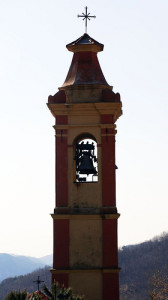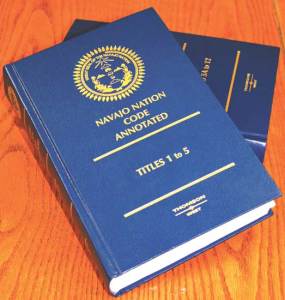 After the EEOC sent two inconsistent letters about a claimant’s case – one in June, and one in July – a confusing limitations problem arose. The Fifth Circuit found that equitable tolling applied and prevented a bar to filing suit. It agreed with the district court that testimony about what the EEOC told counsel on the phone was inadmissible for the truth of the matter asserted, but disagreed that it was completely inadmissible — when offered to prove why counsel acted as he did, the conversation was not offered for a hearsay purpose. The Court also noted that counsel, and his client, had proceeded diligently throughout the matter, noting: “Th[e] desire to have an EEOC letter with all the t’s crossed and i’s dotted is a sign of diligence rather than dawdling.” Alvarado v. Mine Service, Ltd., No. 14-50668 (July 30, 2015, unpublished).
After the EEOC sent two inconsistent letters about a claimant’s case – one in June, and one in July – a confusing limitations problem arose. The Fifth Circuit found that equitable tolling applied and prevented a bar to filing suit. It agreed with the district court that testimony about what the EEOC told counsel on the phone was inadmissible for the truth of the matter asserted, but disagreed that it was completely inadmissible — when offered to prove why counsel acted as he did, the conversation was not offered for a hearsay purpose. The Court also noted that counsel, and his client, had proceeded diligently throughout the matter, noting: “Th[e] desire to have an EEOC letter with all the t’s crossed and i’s dotted is a sign of diligence rather than dawdling.” Alvarado v. Mine Service, Ltd., No. 14-50668 (July 30, 2015, unpublished).
Category Archives: Evidence
 To oppose a summary judgment motion in a mortgage servicing case, Plaintiffs sought to introduce two documents: (1) “a printoff from the HOPE Loan Portal, an online log maintained by Impact [a consultant hired by Plainitffs] to catalogue any updates with the [Plaintiffs’] loan-modification application,” and (2) a handwritten call log seemingly created by Impact employees as they contacted BOA for updates by telephone. The Fifth Circuit affirmed their exclusion in Thompson v. Bank of America, N.A., No. 14-10560 (April 21, 2015).
To oppose a summary judgment motion in a mortgage servicing case, Plaintiffs sought to introduce two documents: (1) “a printoff from the HOPE Loan Portal, an online log maintained by Impact [a consultant hired by Plainitffs] to catalogue any updates with the [Plaintiffs’] loan-modification application,” and (2) a handwritten call log seemingly created by Impact employees as they contacted BOA for updates by telephone. The Fifth Circuit affirmed their exclusion in Thompson v. Bank of America, N.A., No. 14-10560 (April 21, 2015).
Noting that “[i]n the case of an exhibit purported to represent an electronic source, such as a website or chat logs, testimony by a witness with direct knowledge of the source, stating that the exhibit fairly and fully reproduces it, may be enough to authenticate,” the Court observed: “At no point does [Plaintiffs’] affidavit say that they have personal knowledge of the online log or that it represents an unaltered version of the website. . . . That is likely because, by all indications, those logs were created and maintained by Impact, not the Thompsons. Nor do the logs have characteristics that would authenticate them from their own appearance under Rule 901(b)(4).” The opinion summarizes some other federal authority about the authentication of evidence obtained from the Internet.
 The parties in Morton v. Yonkers disputed whether a gas royalty interest was void under the laws of the Navajo Nation. No. 13-10926 (Nov. 19, 2014). One party submitted a letter from an attorney for the Navajo Nation Department of Justice, opining that the “purported overriding royalty interest is invalid under the applicable provisions of the Navajo Nation Code and is completely void.” The Fifth Circuit affirmed the lower courts’ conclusion that this letter was inadmissible hearsay, and did not qualify for an exemption under Fed. R. Evid. 803(8) or (15) [public records and statements about property interests]; or the general exception in Rule 807 [the former 803(24) and 804(b)(5), combined in 2011]: “Trustworthiness is the linchpin of these hearsay exceptions. We are persuaded by the district court’s thorough explanation that the letter is untrustworthy, in large part because it was drafted by Morton’s counsel and was prepared after Morton’s counsel provided the Navajo Nation official with only one side of the story.”
The parties in Morton v. Yonkers disputed whether a gas royalty interest was void under the laws of the Navajo Nation. No. 13-10926 (Nov. 19, 2014). One party submitted a letter from an attorney for the Navajo Nation Department of Justice, opining that the “purported overriding royalty interest is invalid under the applicable provisions of the Navajo Nation Code and is completely void.” The Fifth Circuit affirmed the lower courts’ conclusion that this letter was inadmissible hearsay, and did not qualify for an exemption under Fed. R. Evid. 803(8) or (15) [public records and statements about property interests]; or the general exception in Rule 807 [the former 803(24) and 804(b)(5), combined in 2011]: “Trustworthiness is the linchpin of these hearsay exceptions. We are persuaded by the district court’s thorough explanation that the letter is untrustworthy, in large part because it was drafted by Morton’s counsel and was prepared after Morton’s counsel provided the Navajo Nation official with only one side of the story.”
The trustee of a litigation trust formed from the bankruptcy of Idearc, Inc. sued its former parent, Verizon, alleging billions of dollars in damages in connection with its spinoff. After a bench trial and several other orders, the district court ruled in favor of defendants, and the Fifth Circuit affirmed in U.S. Bank, N.A. v. Verizon Communications, No. 13-10752 (revised Sept. 2, 2014).
The opinion, while lengthy, still only hints at the complexity of the case, and much of its analysis is fact-specific. Some of the issues addressed include:
1. A bankruptcy litigation trust does not have a right to jury trial on a fraudulent transfer claim, when the defendant creditor has filed a proof of claim in the bankruptcy, and the bankruptcy court must resolve whether a fraudulent transfer occurred to rule on that claim (analyzing and applying Langemkamp v. Culp, 498 U.S. 42 (1990), in light of Stern v. Marshall, 131 S. Ct. 2594 (2011)).
2. In the context of determining whether the district court reviewed an earlier ruling correctly, on pages 26-27, the Court provided crisp definitions of the basic concepts of dictum and holding.
3. In the course of rejecting an argument about the refusal to admit several pieces of evidence, the Court noted that the trustee “does not discuss how each specific piece of evidence was likely to affect the outcome of the trial, in light of all the evidence presented.”
4. A defense expert, without experience in the particular industry, was still qualified to speak to valuation methodology in the bench trial, and “we cannot reverse the district court for adopting one permissible view over the other.”
5. The Court thoroughly reviewed the fiduciary duties owed from a parent to a subsidiary under Delaware law, while affirming the district court’s conclusions about causation associated with their alleged breach.
At issue in Meadaa v. K.A.P. Enterprises LLC was the relative liability of three defendants for a $3.5 million claim. No. 12-30918 (July 1, 2014). In a summary judgment affidavit, an expert opined that transactions of Defendant 1 had not resulted in unfair advantage to Defendants 2 and 3, and had kept its affairs separate from those of Defendant 4. The expert had reviewed financial documents from Defendant 1 and tax returns from Defendant 4. The Fifth Circuit found no clear error in the district court’s striking of this affidavit for a lack of personal knowledge. Because “[i]t is by no means clear how a [CPA] can obtain personal knowledge of the effects of the actions of one entity on other parties without reviewing the latter’s financial documents,” it was “incumbent upon him to explain how he acquired such knowledge.” As a procedural matter, the Court also found that a notice of appeal from a final judgment encompassed a later ruling on a Rule 59 motion.
A subtle Erie issue flashed by when Andrews alleged premises liability claims against BP, and the Fifth Circuit affirmed summary judgment for BP under a Texas statute. Terry v. BP Amoco, No. 12-40913 (June 27, 2014, unpublished). BP won summary judgment: “Exhibits C and D are the only evidence that Andrews identified as raising a material issue of fact as to BP’s responsibility for the explosion. Those exhibits are a Safety Bulletin issued by the United States Chemical Safety and Hazard Investigation Board (CSB) and a CSB press release discussing the bulletin. The statute creating the CSB, however, prohibits Andrews from using the documents as evidence in this case. Additionally, both CSB documents also likely constitute inadmissible hearsay under the Federal Rules of Evidence.” The question not raised is how much substantive effect this type of federal statute must have in a state law tort claim, removed to federal court under diversity jurisdiction, so as to raise an Erie issue.
The plaintiff in Sanders v. Flanders alleged legal malpractice arising from the handling of patent applications. The Fifth Circuit did not engage the question whether he had shown lost profits with reasonable certainty, noting: “[C]ounsel admitted during oral argument that [Plaintiff] did not make any offer of proof concerning the lost-profit evidence that he would have otherwise presented but for the district court’s hearsay ruling.” No. 13-50235 (April 22, 2014, unpublished).
A painstaking panel issued two detailed tax opinions on the same day. In the first, “substantial underpayment” penalties were found appropriate, in a partnership-level proceeding, where substantial authority did not support the taxpayer’s position as to a well-known inappropriate tax shelter. NPR Investments LLC v. United States, No. 10-41219 (Jan. 23, 2014). In the second, the Court affirmed a finding that certain claimed tax credits were not “qualified research expenses” within the meaning of the Internal Revenue Code, while also remanding to enforce a stipulation made by government before the Tax Court, In an evidentiary holding of broader interest, the court found no abuse of discretion in the exclusion under Rule 403 of the taxpayers’ alleged lab records, agreeing that they were voluminous and not pertinent to the specific tax law issues at hand. Shami v. Commissioner of Internal Revenue, No. 12-60727 (Jan. 23, 2014). Both opinions discuss the appropriate standards of review for appeal from the U.S. Tax Court.
After a jury trial, the plaintiff won judgment of $336,000 for breach of a joint venture to bid a contract with the Air Force about upgrades to the storied Paveway laser-guided bomb program. X Technologies v. Marvin Test Systems, No. 12-50230 (June 11, 2013). On the issue of causation, the Fifth Circuit quickly dismissed two challenges to a key witness’s qualifications since he was not testifying as an expert, and also dismissed the effect of a claimed impeachment in light of the full record developed at trial. The Court went on to affirm a directed verdict on a claimed defense of prior breach, finding that the agreement only imposed a one-way bar on multiple bids for the contract, and to affirm the judgment of breach, noting multiple uses of “team” in the record to describe the parties’ relationship.
In Homoki v. Conversion Services, a check processing company sued its sales agent and a competitor. No. 11-20371 (May 28, 2013). It won judgment for $700,000 against the competitor for tortious interference with the sales agent’s contract with the company, and $2.15 million against the agent for past and future lost profits. The company and competitor appealed. First, the Fifth Circuit — assuming without deciding that the plaintiff had to show the competitor’s awareness of an exclusivity provision in the agent’s contract — found sufficient evidence of such knowledge in testimony and the parties’ course of dealing, and affirmed liability for tortious interference. Second, the Court found that the plaintiff’s “experience in managing his business for sixteen years” supported his damages testimony, and that “[w]hile [plaintiff]’s presentation of its damages evidence was far from ideal,” also found sufficient evidence of causation on the interference claim. Finally, the Court found that the plaintiff had given adequate notice of its claim of conspiracy to breach fiduciary duties (the joint pretrial order was not signed by the judge), but the plaintiff waived jury trial on that issue by not requesting a damages question — particularly given the significant dispute about causation in the evidence presented.
The Fifth Circuit has had a about the application of Daubert, and its effect on the roles of judge and jury. In Huffman v. Union Pacific Railroad, the Court moved to the other end of the technical spectrum, and analyzed the sufficiency of evidence in a FELA case about a former railway worker’s alleged on-the-job injuries. No. 09-40736 (March 13, 2012) After thorough analysis of the worker’s allegations, the Court held that expert testimony on causation was not necessary to support a jury finding for the worker, but found that the worker had not presented enough evidence about the type of injury to satisfy even that standard. Op. at 21-22. Judge Southwick wrote for the majority, joined by Judge Owen, and Judge Dennis dissented. The case analyzes FELA precedent but is of substantially broader interest on general causation issues. The Court also briefly analyzed and rejected a judicial estoppel argument. Op. at 7-8.
In McGee v. Arkel Int’l, the Court addressed the thorny choice-of-law issue raised by a conflict between limitations provisions. No. 10-30393 (Feb. 16, 2012). It found that Iraqi law was adequately proven under Fed. R. Civ. P. 44.1 through an expert’s affidavit, which included a translation and cited a generally consistent website. Op. at 13-14 (noting that defendant “did not put forth any alternative translation and has not suggested how the [plaintiff’s] translation might be inaccurate”). The Court found that the action was time-barred under Louisiana law, was not shown to be time-barred under Iraqi law, and thus fell within a rarely-used Louisiana law allowing the action to proceed as “warranted by compelling considerations of remedial justice.” Op. at 18 (citing La. Civ. Code art. 3549).
In a complicated case about jurisdiction over a challenge to administrative action, the Court addressed the general effect of presumptions under the Federal Rules of Evidence and Rule 301 in particular. City of Arlington v. FCC (No. 10-60039, Jan. 23, 2012). The Court reminded that under the “bursting-bubble” approach of Rule 301, “the only effect of a presumption is to shift the burden of producing evidence with regard to the presumed fact.” Op. at 42. Accordingly, “once a party introduces rebuttal evidence sufficient to support a finding contrary to the presumted fact, the presumption evaporates,” and “[t]he burden of persuasion with respect to the ultimate question at issue remains with the party on whom it originally rested.” Id.
The Court does not publish many opinions outside of the Daubert area that construe the Federal Rules of Evidence. New judge Stephen Higginson, in a technical opinion about conditions of prison release for medical treatment, addressed an uncommon hearsay issue in Sealed Appellee v. Sealed Appellant, No. 10-11163 (5th Cir. Dec. 19, 2011). The Court affirmed the admissibility of a probation officer’s letter under the “public records” exception of Fed. R. Evid. 803(8), despite its observation that the letter “does attribute some statements to [Appellant’s] sister.” Op. at 7 (citing analysis of a similar issue in Moss v. Ole South Real Estate, 933 F.2d 1300, 1309-10 (5th Cir. 1991)).